Nobody believed single driver IEMs could sound as good as top-of-the-line multi-BA IEMs. That is until Sennheiser proved everybody’s wrong with the release of the single driver IE800 in 2012. It sounded so good that the IEM market changed forever, suddenly hybrid earphones made an appearance and other brands started embracing single driver IEMs. Today we will be testing an entry-level model of the Chinese manufacturer Moondrop Technology, that thanks to the unique color pattern on the IEM body and cable were simply named Starfield for obvious reasons.
Moondrop is a fairly new company, established in 2015, in a short period of time they released more than 25 products. Nowadays their portfolio is quite big, you can choose from affordable earbuds to high-end IEMs and if you are a cable believer, Moondrop got you covered too.
1. Package Contents
We got the Starfield as a final production unit but without the actual retail box. Our unit came with 6 pairs of silicone tips in 3 different sizes, with a pretty nice-looking detachable cable and with the IEMs themselves. The actual retail box will also include a rounded carry case, 6 replacement mesh grills, tweezers to change the mesh grills and the user manual.
I personally never seen anyone putting mesh grills and tweezers in the package, those add a lot to the longevity of the Starfield and I can only praise them for that.
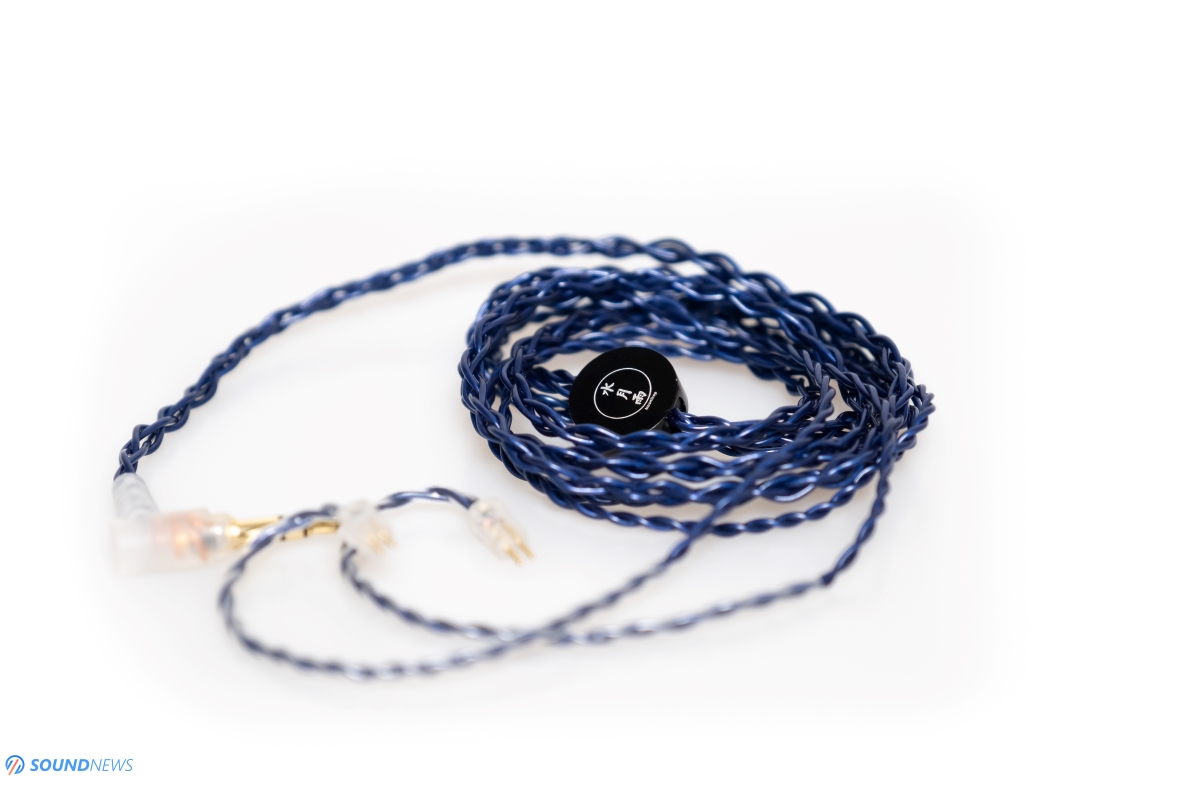
2. Detachable Cable
Cable quality seems nice, it’s a 24AWG braided cable with a litz structure that uses 4 Core OFC conductors. The internal conductors have a purity of 4N, it’s more than a decent cable considering the price of the overall package. The cable is free of any microphonics, is very flexible and seems to be durable. The only thing I dislike about it are the tiny markings of L and R, I can see them only in direct light.
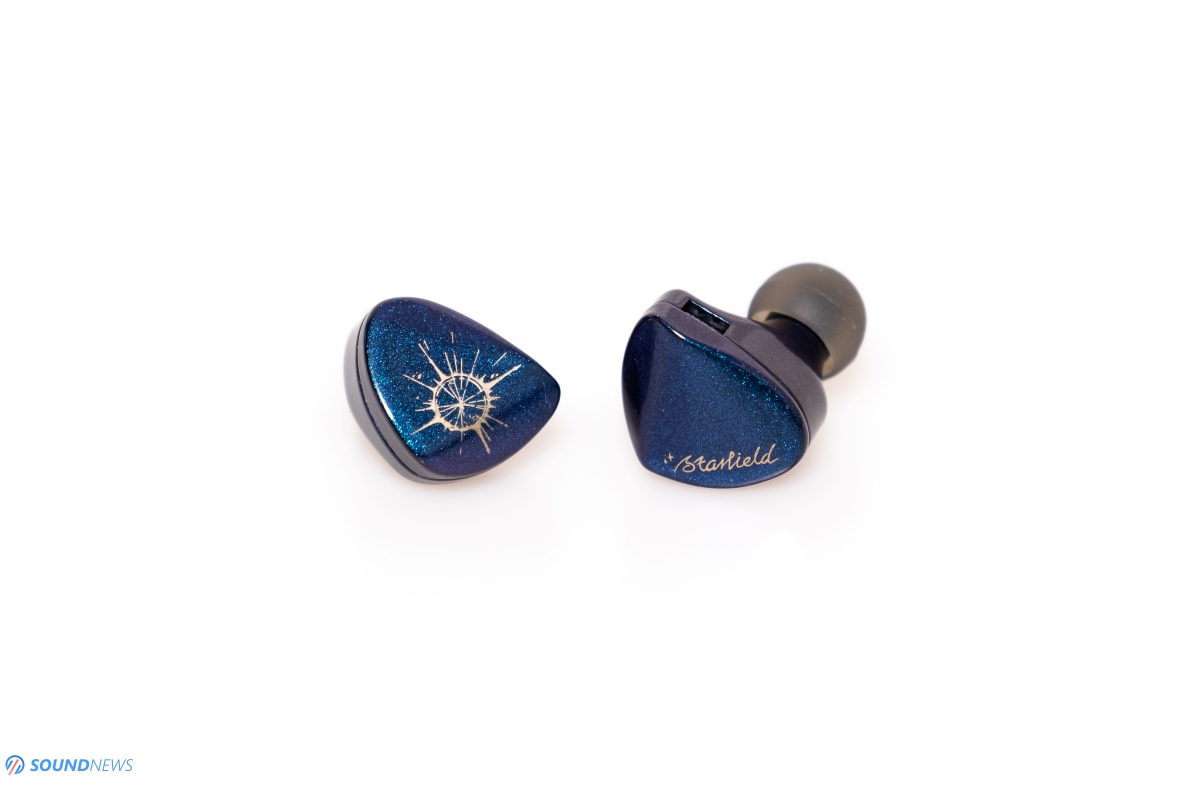
3. Looks & Build Quality
Starfield is carved on a CNC machine from two smaller blocks of aluminum. It feels quite heavy in the hand, it is among the heavier IEMs I have tested and impresses only with the weight alone. It has smooth lines, a rounded body, the body surface is slippery and that adds a lot to the comfort level. You can clearly see the spot where the aluminum cover was attached to the rest of the body, but that doesn’t bother me at all.
Since it lacks multiple BA’s and a complicated crossover, it has a medium body size that doesn’t stick out too much and doesn’t attract a lot of attention. Speaking about that, if it gets direct sunlight, it will sparkle and will shift colors when looking from a different angle. Starfield is offered only in this glittery blue color scheme with the same cable color. It is powder-coated, so it should resist a lot of abuse.
It is already common practice eliminating the air pressure between the ear canal and the IEM body, Starfield is having two small holes on its body that will eliminate that air pressure. This is a huge comfort enhancement that was (again) introduced by the IE800 of Sennheiser.
The IEM has a standard-sized metal nozzle (4.1mm in diagonal) so all the third-party ear-tips will work with them. I have already tested Spin-Fit, lots of silicon and memory foam ear-tips with them, they all work just fine.

4. Tech Inside the Starfield
This is a single dynamic driver in-ear-monitor. The diaphragm is only 6 microns thick, but it’s rigid and really tough thanks to the carbon nanotube array applied as multiple layers on top of each other.
To achieve an impactful presentation, Moondrop included a trio of high-performance neodymium magnets to push those drivers to their limits. Since this is a single dynamic driver IEM, no additional crossover circuitry was needed, the signal from the source is going directly into the driver assembly and nothing stands in its way. Having a slightly higher impedance of 32 Ohms it should not spot the background noise of the source and it should not hiss with noisier portable DAPs or desktop sources. I tested them with few desktop sources and I can confirm that I am hearing a lower noise floor compared to FiiO FH7 and to Simgot EN700 Pro.
At a high sensitivity of 122 dB/1Vrms, that 10 mm driver will be easily driven even by low powered sources like mobile phones, Bluetooth adapters, and portable DAPs. They worked pretty well with my smartphone, so anything that has a 3.5mm jack should drive them nicely.

5. Sound Performance
5a. Sound Signature
My overall impression is that Starfield has an immaculate impact and a really good speed of delivery. I was quite impressed by their ability to wake up the bass even down low and have a natural and full-bodied midrange. I felt treble like being a double-edged sword, I liked that it had sparkle up top but I didn’t particularly enjoy all the attention it asked for. It can get a bit bright with the stock ear-tips, but I will have some recommendations later on, on how to avoid that. I played my favorite songs and I was enjoying my jazz and my rock with the same engagement level. I believe it has a good amount of detail, a decent pinpoint placement around the listener and a medium-sized soundstage that works great with crowded music. Starfield is mostly linear and revealing, with a hint of warmth and sparkle up top.
5b. Bass
First of all, I’m not a bass-head by any means, but I immensely enjoy a linear bass response that can go as low as 20 Hz, having a good sustain and a nice decay.
I immediately fired my usual bass tracks and at the 0:55 mark on Invisible Sun by The Prodigy, I felt the 20 Hz rumble that normally only great performing IEMs and full-sized planars can reproduce. It had multiple layers of it, it was going really low, it had a great sustain and I was really glad that decay of it was just spot on. Sub-bass was pretty clean, deep-reaching, it had a decent slam and impact.
Mid-bass has a great presence no matter the song, it always makes an appearance, it adds a bit of naturalness and warmness to the mix. I don’t consider it overdone or emphasized, it is linear sounding in terms of frequency response and in this regard Starfield is already impressive in my book. I was worried a bit that its dynamic driver might have some issues when it comes to speed, but it seems that a smaller driver size like this one has (10mm) is much easier to control and push back and forth.

5c. Midrange
Transitioning from bass section to midrange is made in a natural and smooth fashion, without a single drop in the FR, just a clean, beautiful line across the bass and midrange.
The vocal performance is great and the tone is full-bodied almost all the time. Female voices have a very defined pitch that is not bothersome in the long run, male voices are sounding much heavier, guttural sometimes, very imposing and quite real. Dynamic drivers were always champions in terms of midrange and Starfield is no different.
The only thing I dislike is that upper-midrange loses some of its energy, there seems to be a gentle slope that adds a hollow effect on higher-pitched voices, even listening to some jazz I feel a lower involving factor. I want my midrange smooth, full-bodied and very present but that is not really happening in the upper midrange. I’m hearing a shorter decay, it doesn’t pulsate as much and loses a bit in presence.
Since I have a huge ear-tip collection at my disposal, I decided to try a few of them. When I tried memory foam ear-tips my face suddenly brightened. There was more of a presence in the midrange, warmth came back, even male voice started sounding even more real. Guitars and violins vibrated more and naturalness came back in full force. If you want to improve the midrange, a $6 investment will change them drastically in a very good way and as a result, midrange performance is close to perfect if I’m using the foam tips only.
5d. Treble

Moondrop is known to be using the Harman Curve as its target in terms of frequency response, meaning they are boosting quite a lot the upper midrange and the lower treble response. I didn’t feel an extra presence in the upper midrange and even in the lower treble. However, I did feel a sharp rise in the upper treble, I’m not sure what is the exact range but I will be measuring them shorty and everything will be clear to me.

(Image credit: InnerFidelity.com)
Treble for me is presented as a double-edged sword. On one hand, the transition from the upper midrange to it is going smoothly and not bothersome in any way. It has just the right amount of details, presence, and sharpness. On the other hand, the upper treble response is making me uncomfortable if I’m listening with the stock ear-tips. There are few moments when a sharp note will bother me for less than a second, that note will be felt again and it will appear in multiple songs. The upper treble is very present with rock music since a lot of cymbals and bells are all over the place. Bottom line is that in its stock form, Starfield is not a recommended IEM for rock but it really depends on the listener. I like my treble linear, present, outlined but never overdone on any range. Starfield somehow impresses with that crispness and over-sharpness, but it will not sound linear and smooth and I cannot listen to it for a longer period of time.
I again decided to use my medium-sized memory foam-tips with them. What a huge difference! It’s almost unbelievable that all the harshness went out of the window in an instant. Treble detail remained intact, the outline on the notes remained as clear and vivid, even the longer vibration remained there too. The only difference is that those harsh notes are nowhere to be found. I can listen to my rock tunes much easier now, it sounds much smoother, more natural and easier going. Just a pleasant experience that will relax my whole body. Again, if you like your treble sharp, extended and super present use the stock silicone ear-tips and if you want a more linear and life-like presentation without too much sharpness then any third-party memory-foam ear-tips should do the trick.
Moondrop is offering such ear-tips too, called MIS-Tip, you will need the T41 size (4.1mm nozzle diameter), I strongly recommend them, it’s the best $6 upgrade you can have with them.

5e. Transient Response & Slam
With a 10mm driver, Starfield has a faster sound delivery so the transient response is good, no complaints here. My mobile sources have absolute control over that driver, it’s always fast and nimble no matter the source I am using.
However, when it comes to slam, Starfield is not the most impressive IEM. It doesn’t carry a lot of air with every note and as a direct result, I don’t feel the punch I am normally experiencing with a great IEM or full-sized headphone. The culprit is the small driver size and the sad truth is that you cannot have them all in a ~$110 IEM.
I feel the sub-bass, I feel its speed, I feel it going really low, but I don’t feel that ultimate punch that I so crave about. From a bunch of mobile sources, the one that really awoke that slam to good levels was FiiO M15 with the “over-ear headphone mode” engaged. It would be stupid recommending a $1,400 DAP with some $110 IEMs so I’m not going to do that, but I’m going to (again, 3-rd time?) recommend those memory-foam ear-tips. With them, slam becomes more than decent, with a better seal the slam is clearly improving, the bass starts pumping and raising my mood level fast. Probably the best $6 investment you can make for them.

5f. Soundstage & Depth
Since I don’t have any balanced cable with 2 pin connectors at the IEM side, I used only the included single-ended cable terminated in 3.5mm.
Starfield has a medium to large soundstage size, it is not impressively huge by any means but it is big and wide nonetheless. Listening to my intimate sounding jazz everything happens outside my head, somewhere at the shoulder level. Sounds are layered and cleverly positioned around me. With M15 from FiiO, Starfield started sounding much deeper, somehow the empty space between musical notes expanded and as a result, I had a much bigger picture in front of me. They do respond great with a better source, amplification, source material, and all those benefits can be spotted quite easily. The soundstage is at least on the same level with the $150 Simgot EN700 with Ear-tip II at that is great news in my book.
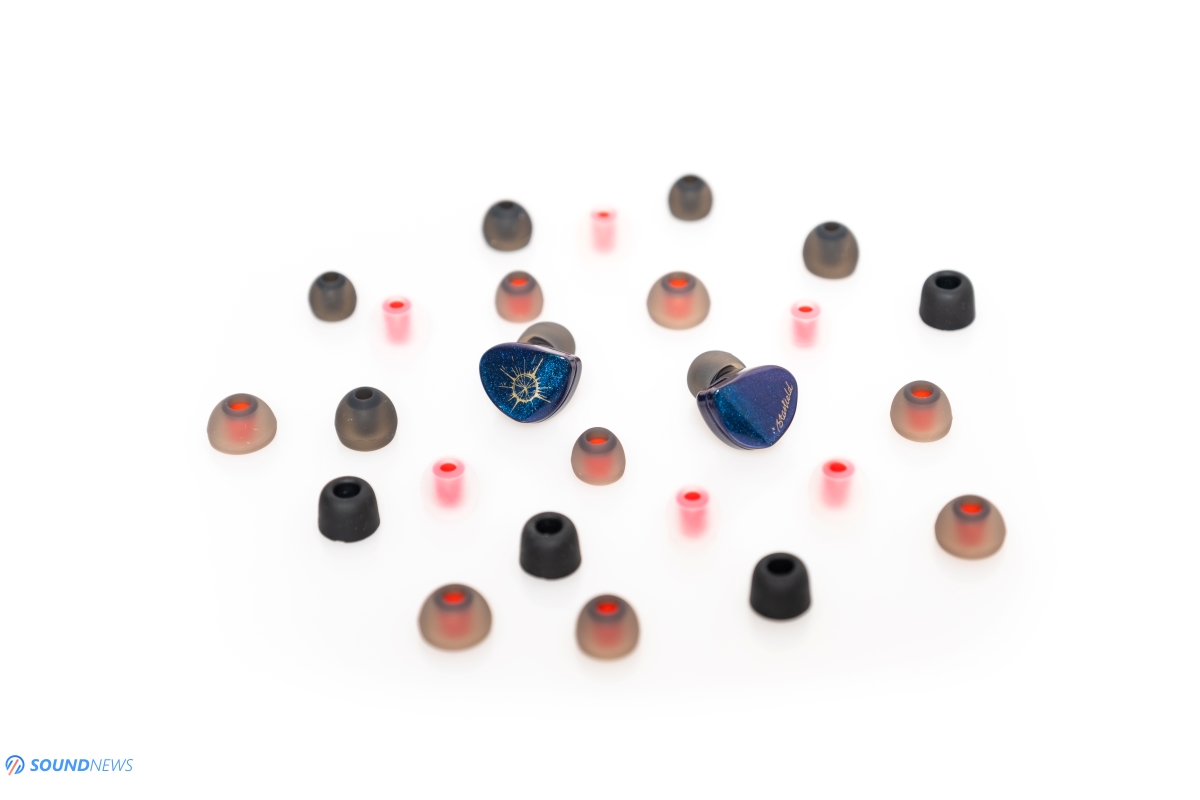
5g. Transparency & Detail Retrieval
Starfield has a good transparency level, it is not offering a grainy presentation and is always clear and crisp sounding. Detail retrieval is good too and thanks to that spike in the upper treble it gives a fake impression of a super detailed and super transparent sound which in reality is not really the case. I can hear tiny details here and there but I need to stress myself for that.
5h. Measurements
After offering my subjective opinion, it is time to put them under a magnifying glass. When it comes to measurements, I trust only the most linear and detailed headphone amp to do the job: Benchmark HPA4. The source was my trusty Matrix Audio element X and the measurement rig was the MiniDSP E.A.R.S. system.
I used only IDF (IEM Diffuse Field) compensation files for this particular EARS serial number. EARS have some huge silicon ears but tiny ear-canal openings and I redid all my measurements more than 20 times because inserting silicon tips that are rubbing against silicon ears is not that easy.

Their RAW measurements are pretty amazing, considering the price point to which they belong. An almost straight line from sub-bass all the way to the upper midrange where it gets a slope and a huge spike at about 14 kHz. That spike is very easy to spot with rock tunes and in general where there is a lot of percussion work. My measuring target was 84 dB and that upper treble rises up to 99 dB, meaning an increase of 15 dB in that region. That spike is tiresome in the long run and I didn’t particularly like it.

Here’s a big surprise, I measured them with medium-sized memory-foam ear-tips and this is what I’ve got. What a huge difference, it is almost unbelievable. Not only the 14 kHz area was tamed by about 10 dB, but the upper midrange sees a very welcomed rise that increases presence and naturalness!

Here is an overlay of both ear-tips, red and blue are the stock ones, orange and light blue are the memory foam ones.
The treble spike is now a small deviation of 6 dB from my 84 dB signal that was sent from the amplifier. Much better measurement and I again strongly recommend using them with some memory foam ear-tips.

The next measurements that will follow were made with memory foam tips only. Total Harmonic Distortion (THD) is actually quite impressive. Bass never goes past 1% and the rest stays somewhere between 0.1 and 0.2%, very nice reading.


Waterfall and spectrogram are showing the hot spots and as you can see the upper treble is bothersome long term.

Decay shows a longer vibration of the driver, but for a dynamic driver, this can be considered as normal behavior.
6. Comparisons
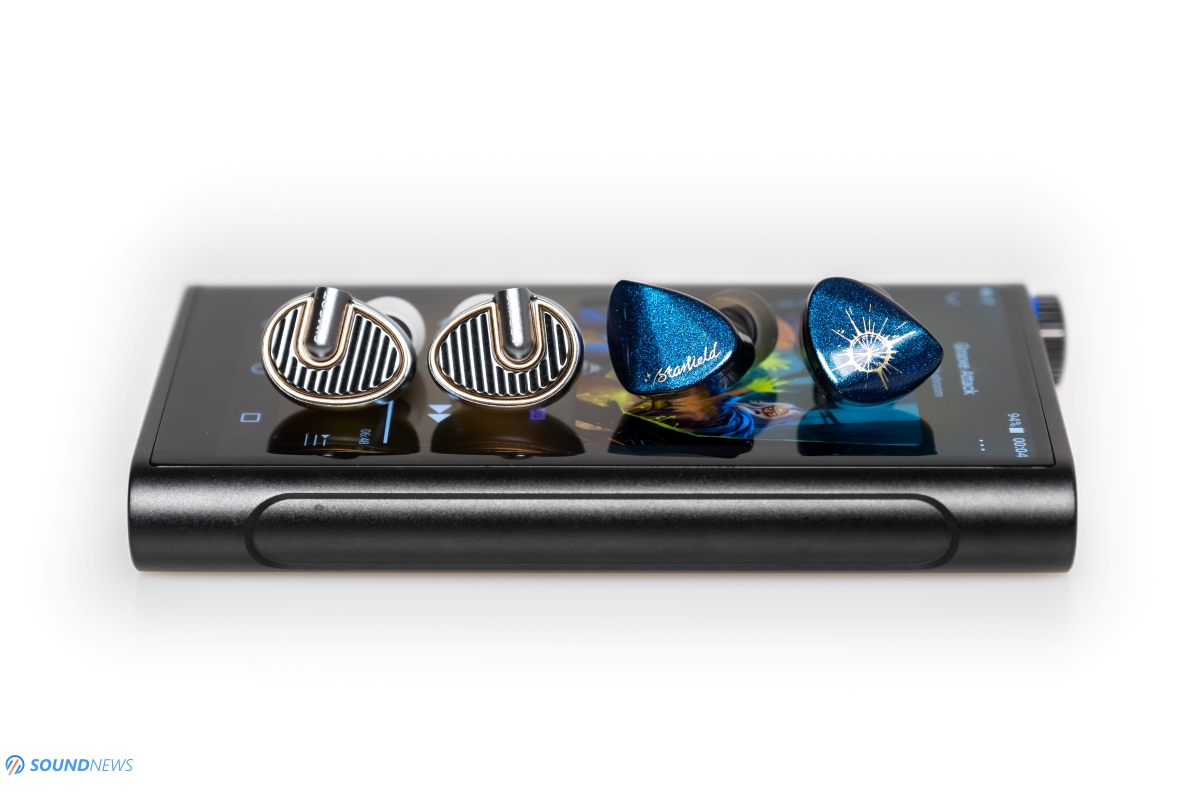
Moondrop Starfield ($109) VS Simgot EN700 PRO (~$150)
In terms of design, both are made out metal, sculpted on a CNC machine. Both have a rounded shape that is comfortable long term. Both have a metal plate that is attached to the rest of the IEM body. In terms of size, Starfield is a bit bigger and heavier. Both use the same 2 pin connectors and have decent detachable cables.
I don’t like the silicone ear-tips and I used only memory foam tips with both for this comparison. I was surprised to hear a similar soundstage size and excellent instrument placement with both IEMs. Depth was identical on both units; transparency was again neck and neck on both and I could look deep into my recording without stressing myself too much.
In terms of frequency response, bass and midrange level is impressive on both units, they worked absolutely incredible with electronica and with faster-paced music. Starfield was sounding a bit fuller and meatier to me, closer to my linearity level. On some tunes EN700 Pro sounded hollow, lacking body and meat to the bone. When I moved to Jazz and Rock, I was distracted by both having a strong presence in the treble. Starfield was less bright and only for a very short period, EN700 Pro was brighter and had a longer decay in the treble. I could listen to EN700 Pro only with memory foam tips, the silicon ones made my rock tunes unlistenable. Both IEMs have strong treble enhancements, but EN700 Pro has a stronger one which bothers me in the long run.
All in all, both are not that far away from each other, and only when critically analyzing both I can spot those differences. Starfield performed great and I have little to no complaints with it.
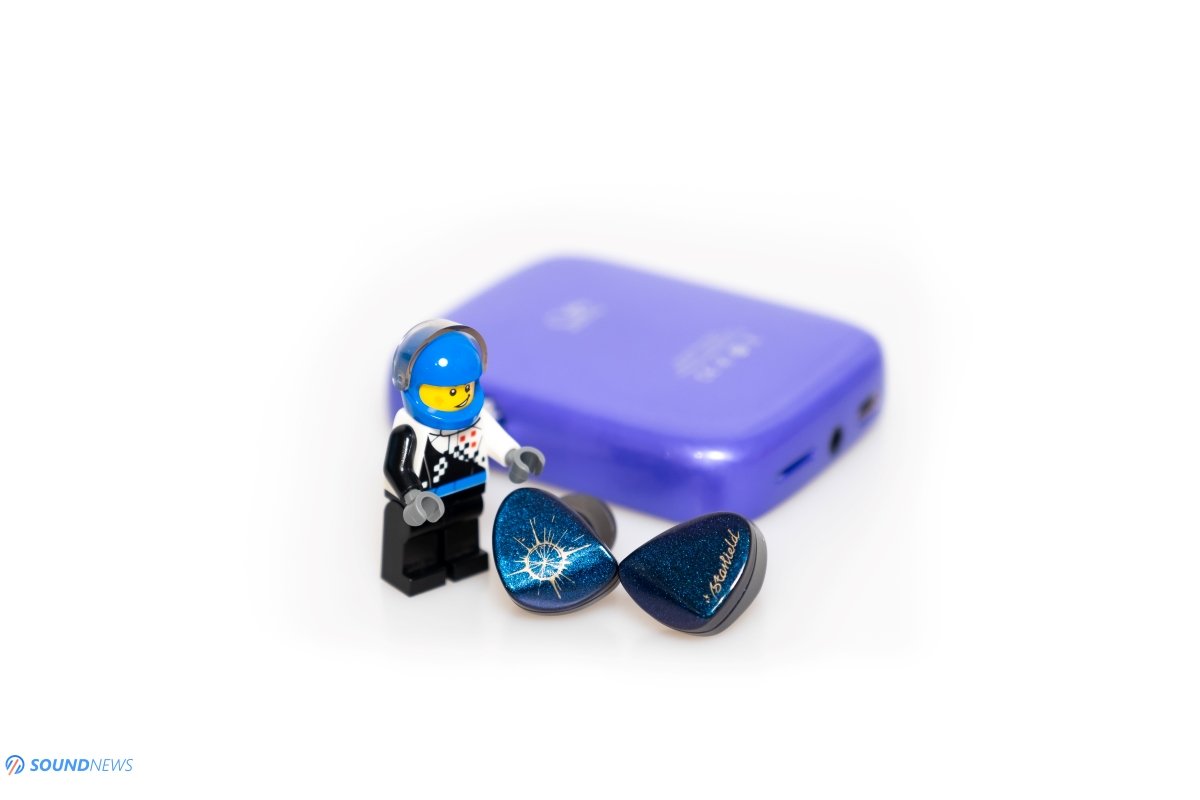
Moondrop Starfield ($109) VS Knowledge Zenith (KZ) AS16 (~$135)
In terms of design, Knowledge Zenith AS16 uses a much bigger shell and only the outer part is made out of metal, the rest of the body is made out of hard resin (plastic). AS16 are not very comfortable as they are heavier, I need to push them deeper into my ear canal and when I do that the IEM body applies pressure on my ears. AS16 is not the most comfortable IEM.
To me Starfield looks better, it is made out of better materials, has a smaller body and it is more comfortable in the long run.
In terms of sound, KZ AS16 have a dry and bright sound signature, it is very uneven, or shall I say it is the most uneven IEM I ever tried to this date.
They have poor sub-bass performance and not a lot of rumble in the bass department. The sound is very ethereal and lightweight. Every note sounds too light for my tastes, piano sounds really poor and everything is just weightless. The midrange is a bit better and will not have a hollow effect, probably the best part of KZ16 is the upper-bass and the midrange area, everything else is quite a mess.
Treble is boosted even more than that of Starfield and induces teeth clenching brightness and a lot of bad languages. KZ AS16 are sounding quite bright, dry in the midrange and don’t have a good bass response. The only thing that can be considered good is their speed performance that outperformed that of Starfield and their depth and soundstage levels. In terms of frequency response, KZ AS16 is a far cry from my linearity curve.
Starfield is (much) better in terms of sub-bass, mid-bass, even upper midrange is more linear and fuller sounding. Starfield has also a boost in the treble area, but not on a wide range. If I am using the memory foam ear-tips the brightness stays under strict control with Starfield, which is very reasonable and can listen to them for a longer period of time. Memory foam tips on AS16 will just barely make them listenable with jazz and rock, I can’t use them for a longer period. Starfield is sounding more linear, full-bodied, have a great tonality and they sound clearer at the same time. Starfield has the same soundstage levels and depth and has an out of the head presentation with the right music and gear.
Starfield is just a much better IEM compared to KZ AS16, sorry KZ lovers, but that is the ugly truth.

7. Conclusions
If I am overlooking the treble performance with the stock silicone tips then I will hardly find anything to complain about their looks or sound. I was never quite impressed by an IEM up to $200. EN700 Pro and IKKO OH1 were really close to being perfect. Starfield is not perfect but comes much closer to being one. If you want to rock out with them and not be bothered by any brightness, then I strongly recommend getting those memory-foam ear-tips, it is the best possible upgrade you can have with them at a price of a pizza slice.
At $110 there is nothing to complain about and I consider them better than its close competitors not only in terms of build quality but in terms of sound quality as well.
PROS:
- Great fit and finish, high comfort levels
- Wide soundstage size with lots of air around the notes
- Linear sub and mid-bass performance, amazing speed too
- Linear midrange, full-bodied with the right ear-tip
- Extended treble performance, lots of sparkle up top
- Good detail retrieval and transparency
- Great measurements (especially with memory foam ear-tips)
- Extremely easy to drive
- Great performance considering its price point
CONS:
- The upper treble is bothersome with stock silicone ear-tips

 Free Shipping
Free Shipping
 Price Match Guarantee
Price Match Guarantee
 Apos One-Year Transferable Warranty
Apos One-Year Transferable Warranty
 45-Day Return
45-Day Return

![Apos Audio Apos Cable Apos Flow Headphone Cable for [HIFIMAN] 3.5mm | Sundara / Ananda / Arya / Susvara / Susvara / HE1000SE / HE400i / HE400s / HE1000 V2](http://apos.audio/cdn/shop/products/apos-audio-apos-cable-apos-flow-headphone-cable-for-hifiman-3-5mm-sundara-ananda-arya-susvara-susvara-he1000se-he400i-he400s-he1000-v2-29869837451435_{width}x.jpg?v=1630546104)






